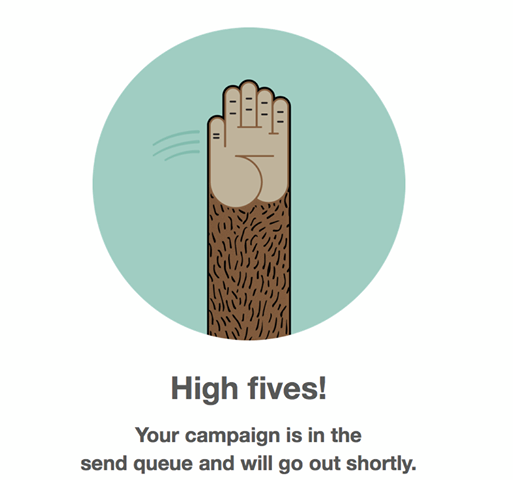Games designers know that one of the most important thing in gaming is to celebrate the player’s victories. This, however, rarely happens in non-game products. And you are about to change it.
(tl;dr, scroll down for key takeaways at the bottom)
Celebration in games
I remember the day I finished Plants Vs. Zombies 1. In case you are not familiar with this adorable title by PopCap, It’s a casual game about defending your back yard from raids of zombies by planting all kinds of crazy plants. It took me about 10 hours of planting, shooting zombies and getting my brain eaten to get to the very last level. I was emotionally invested and felt like I’ve worked hard (and played hard!) to get there. After quite a few failed attempts, with my garden down to it’s last law mawn, I managed to kill the last zombie. Suddenly, the screen darkened, a yellow sunflower appeared and started to sing! for me! This was such a delightful surprise, what a great way to celebrate the end of a game! This remarkable experience stayed with me to this very day.
Small victories should be celebrated too
An end game is a noble cause for a celebration. But games make sure that every small victory is celebrated. In Peggle Blast, another PopCap title, every level win is ridiculously celebrated, zooming in on the ball hitting the last peg, in slow motion, accompanied with the hyperbolic sounds of Beethoven’s Ode to Joy.
Not only victories are celebrated, failures should be as well. Games are full of funny deaths. Think of Mario’s end game theme or digger’s RIP tombstone.
Celebration in non-games
I found it hard to find appropriate celebrations among non-game products. And there’s so much to celebrate! A good example is how Mailchimp, the email marketing provider, celebrates the success of a launched campaign: With an high-five! This surprising, human touch act made me laugh and I found it very delightful. I was a bit disappointed that I couldn’t really high five the monkey with the click of my mouse, but you know, I really value them for celebrating with me anyway.
Another example is Slideshare, the platform for sharing presentations, now owned by LinkedIn. Slideshare celebrates important milestones such as “Your presentation just got featured in our home page!” with a festive mail sent to your inbox. Not as fun as high-fiving me, but it still makes me feel (somewhat) special.
However, as said, this is not enough. You can do better. Here are the key take aways:
Celebration: Key Takeaways:
Why should we celebrate with our users?
It gives the user a warm, fuzzy feeling, to know that the other side appreciates their effort and rewards them for it.
How should we celebrate?
The more fun and surprising way – the better. It should be aligned with the service’s language though. I mean, it might get weird to have a .gov site cheering you with dancing girls in bikinis after successfully filing a tax form. (Hmm.. ).
When should we celebrate?
Every end of process calls for a celebration, but it really depends on how much the user sweat for it. A high five for filling a form, a big celebration when finishing a course, for example. The users deserve it.
When should we NOT celebrate?
Passive actions shouldn’t be celebrated. Like, “you’ve been with us for 1 year!” (sent to a non-active account), or “you’ve traveled X miles!” in Waze. That’s just annoying.
Do you know of any more cases of fun celebrations in non-game products?
Write it in the comments and I’ll update this post accordingly.
Now let’s celebrate your read of this post!

